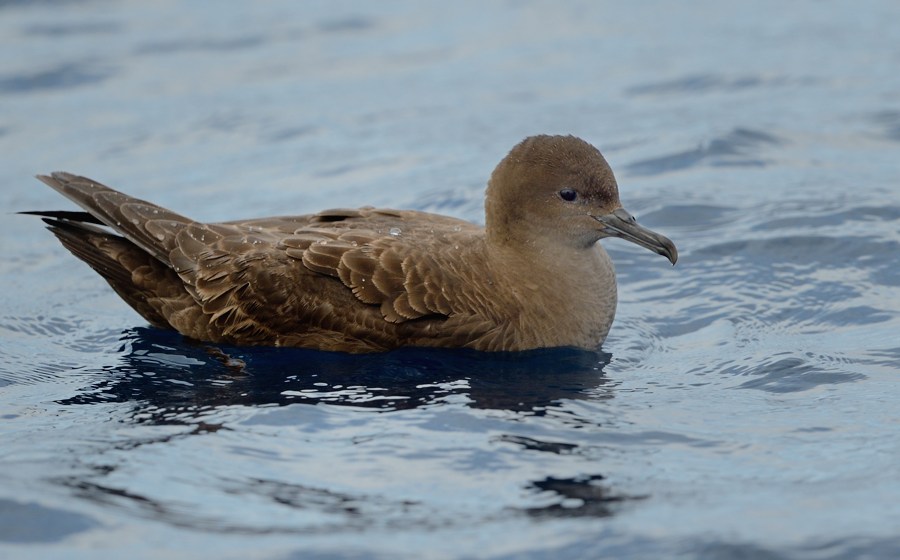
Short-tailed Shearwater at sea, photograph by Kirk Zufelt
Vincent Scoleri (School of Natural Sciences, University of Tasmania, Sandy Bay, Australia) and colleagues have published in the journal Biological Conservation on Tasmanian Devils Sarcophilus harrisii causing the extinction of a colony of Short-tailed Shearwaters Puffinus tenuirostris.
“Offshore islands are ideal for establishing insurance populations of endangered species as they often lack threatening processes found on mainlands. However, introductions of endangered predators can have complex effects on island species. The Tasmanian devil (Sarcophilus harrisii) was introduced to Maria Island in Tasmania, Australia in 2012 to establish an insurance population separate from a novel disease causing declines throughout its native range. Maria Island has small breeding colonies of the short-tailed shearwater (Puffinus tenuirostris) that are preyed on by an invasive mesopredator (feral cat, Felis catus) and an introduced native omnivore (common brushtail possum, Trichosurus vulpecula). We tested whether the introduction of devils increased predation pressure on shearwaters or reduced it by suppressing cat and possum activity. We measured predator activity on shearwater colonies, and surveyed burrow occupancy of shearwater adults and chicks, from 2013 to 2016; we also monitored shearwaters at a colony on a nearby island without terrestrial predators for comparison. Increasing devil activity was associated with decreasing total predator activity at shearwater colonies on Maria Island due to declines in possum and cat activity, evidently caused by predation on possums by devils, and competition with cats. However, shearwater colonies continued to decline, reaching zero occupancy within four years of devil introduction. Because of their larger size and ability to dig, devils had greater impacts on nesting shearwaters than either cats or possums. Conservation translocations of endangered predators must consider trade-offs between their protection and potential impacts on non-threatened native prey species.”
Reference:
Scoleri, V.P., Johnson, C.N., Vertigan, P. & Jones, M.E. 2020. Conservation trade-offs: island introduction of a threatened predator suppresses invasive mesopredators but eliminates a seabird colony. Biological Conservation 248. doi.org/10.1016/j.biocon.2020.108635.
John Cooper, ACAP Information Officer, 13 August 2020

 Français
Français  English
English  Español
Español